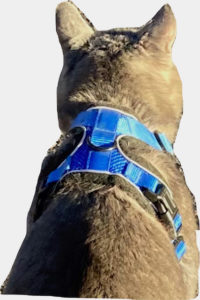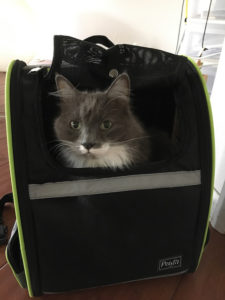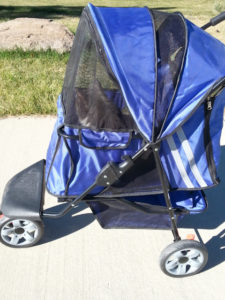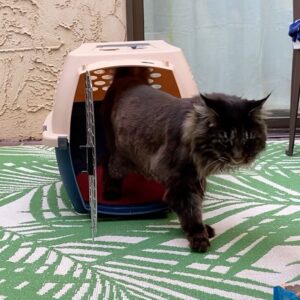 Whether you are relocating or just visiting extended family, flying with your cat requires planning and preparation.
Whether you are relocating or just visiting extended family, flying with your cat requires planning and preparation.
flying with your cat
Air travel is stressful for us but imagine how stressful it must seem to a cat – he must be in his carrier for an extended period of time, he doesn’t know what is happening or when it will end. Here are some things to think about.
Is my cat fit to fly?
When considering flying with your cat, take into account your cat’s mental, emotional and physical health. Air travel may not be the best option for
- geriatric cats with multiple medical conditions
- cats suffering from anxiety-related disorders such as Feline Idiopathic Cystitis
- cats with asthma or chronic bronchitis
Discuss your travel plans with your veterinarian. He or she can help you assess the risks of flying with your cat.
getting ready to fly
Health Certificate
Airlines require a health certificate for domestic and international travel (Reference 2)
- In the U. S., a veterinarian must be USDA accredited to issue a health certificate.
- The veterinarian examines the cat, verifies the animal’s vaccination status, and states that the cat is free of any infectious or contagious diseases.
- A health certificate is issued within 10 days of the date of travel.
choosing an airline
Do your research and choose an airline that has a well-established pet program. In the U.S., the Federal Aviation Administration allows individual airlines to decide whether your cat travels in the passenger cabin or in the cargo area.
Airlines can also restrict which cat breeds they will accept to fly. Check with the airline you plan to use. Restricted breeds may include Scottish Folds and Burmese in addition to brachycephalic (snub-nosed) cats such as persians, himalayans and exotic shorthairs (Reference 3).
cabin or cargo?
Some air carriers will offer you a choice of having your cat with you in the cabin or in the cargo area. In the cabin, your cat will be with you and you can keep on eye on her during the flight. However, most airlines require that the cat remain in the carrier throughout the flight. Her carrier must be able to fit under the airline seat – carriers must be about 18”x11”x11”. Again, this depends on the airline – some have smaller maximum sizes. Typically, the flexible fabric carriers are the ones that will fit.
If an airline does allow you to bring your pet into the cabin, your cat is considered to be carry-on baggage and you must follow all carry on baggage rules, including the TSA checkpoint.
While the cargo area itself is pressurized and air-conditioned, temperatures in holding areas can reach unsafe temperatures for animals confined in plastic kennels on hot summer days. Pets can only fly cargo if temperatures in the holding areas are between 45-85 degrees. Outside this range and pets will be rescheduled (Reference 3).
Certain cities may be on a no-fly list for pets during the summer months due to the heat.
The pros of cargo flight:
- The carrier can be larger for cargo flight, ideally large enough for the cat to stand up and turn around. A rigid carrier with ventilation on at least 3 sides and a rigid metal door may be used (Reference 1).
- For some cats, flying cargo may be a better choice as the cargo hold is away from the noise and activity of the cabin.
food, water, litter boxes
- In cargo, airlines may require that you attach a bag of food to the top of the carrier or have food in the carrier. Most carriers have bowls that attach to the metal door of the carrier. In the cabin, you can pack some snacks for your cat.
- Whether in the cabin or cargo area, your cat will need access to water during the flight. Many carriers come with a bowl – you can freeze water in the bowl and attach just before putting your cat in the carrier. As the ice melts, your cat has water (Reference 1)
- A travel carrier will not have room for a litter box. Use an absorbent pad with a gripping surface on the bottom (Reference 1). You can top this with a rectangle of fleece – liquid waste can pass through this to the absorbent pad below.
US flights – TSA checkpoints (Reference 4)
If you are flying with your cat in the cabin, you will have to pass through a TSA checkpoint. Carry-on baggage must pass through an x-ray system. Your cat will have to come out of the carrier and walk or be carried through the security checkpoint with you as her carrier goes through the x-ray tunnel.
If you’re concerned that your cat will get away from you, request that a TSA officer screen the cat in a private screening room. You and your cat (in her carrier) will be taken to a room to be screened.
TSA routinely swabs the hands of pet owners to test for traces of explosives.
Other travel options
Does all this sound overly complicated? There are services that will arrange transporting your cat – these services may use air and/or ground transport. Although costly, these services take care of all the arrangements, and keep track of when health certificates and other paperwork need to be filed.
There is even an airline where the only “pawsengers” are cats and dogs! See https://petairways.com/
Should my cat have medication?
Most cats will benefit from an anxiolytic medication or supplement in the days leading up to the flight, the flight itself and the first few days in the new location. The medications used to reduce anxiety at the veterinary clinic can be used for flight anxiety. Talk to your vet; here is a link for more information about medication.
The AVMA does not recommend sedating or tranquilizing animals for air travel due to the risk of heart and respiratory problems at flight altitudes. Be sure to do a trial with your medication – your cat must be alert and able to balance or she may not be allowed to fly.
pre-flight preparation
- Carrier training: Your cat will travel more easily if she is familiar and comfortable with her carrier. Allow several weeks if this is a first trip and a new carrier; the seasoned cat traveler may benefit from a review! See carrier training
- Harness Training: If you are flying with your cat, having a leash and harness on your cat gives you some extra security during flight layovers, customs checks, or taking a break when driving to or from the airport. You can have an “extra hand” while changing soiled pads in the carrier or allowing your cat to stretch her legs.

Zelda walking indoors on her leash.
Arrival
Congratulations, you have reached your destination and the trip is over! But your job is not done – you need to settle your cat into her new location.
- It is best to start with confining your cat to a room with all her resources. When she indicates that she wants to check out the world beyond her room, harness her up and take her for a tour of the new place. Watch her body language and allow her to return to her room if she wants (see Moving With Your Cat).
- f you are traveling with multiple cats, let them get reacquainted. Don’t try to rush things – go slowly and give them time (See Intoducing Cats).
Flying with your cat is an adventure! Research your airline and talk to your vet about whether your cat is “fit to fly” and getting a health certificate. Prepare your cat by training her to her carrier and to a harness and leash. If you opt to do anti-anxiety medication or supplements, try them out before you leave. Bon voyage!
references
- Jahn K, DePorter T. Feline stress management during air travel: a multimodal approach. Journal of Feline Medicine and Surgery. 2023;25(1). doi:10.1177/1098612X221145521
- Travel with a Pet. USDA Animal and Plant Health Service. https://www.aphis.usda.gov/pet-travel. Modified: March 29, 2024.Viewed 6/2024.
- American Airlines: Travel information/Special Assistance/pets. https://www.aa.com/i18n/travel-info/special-assistance/pets.jsp viewed 6/2024.
- TSA tips on traveling with pets through a security checkpoint at Dulles International Airport. Transportation Security Administration. Local Press Release. Friday, February 24, 2023. Viewed 6/2024.


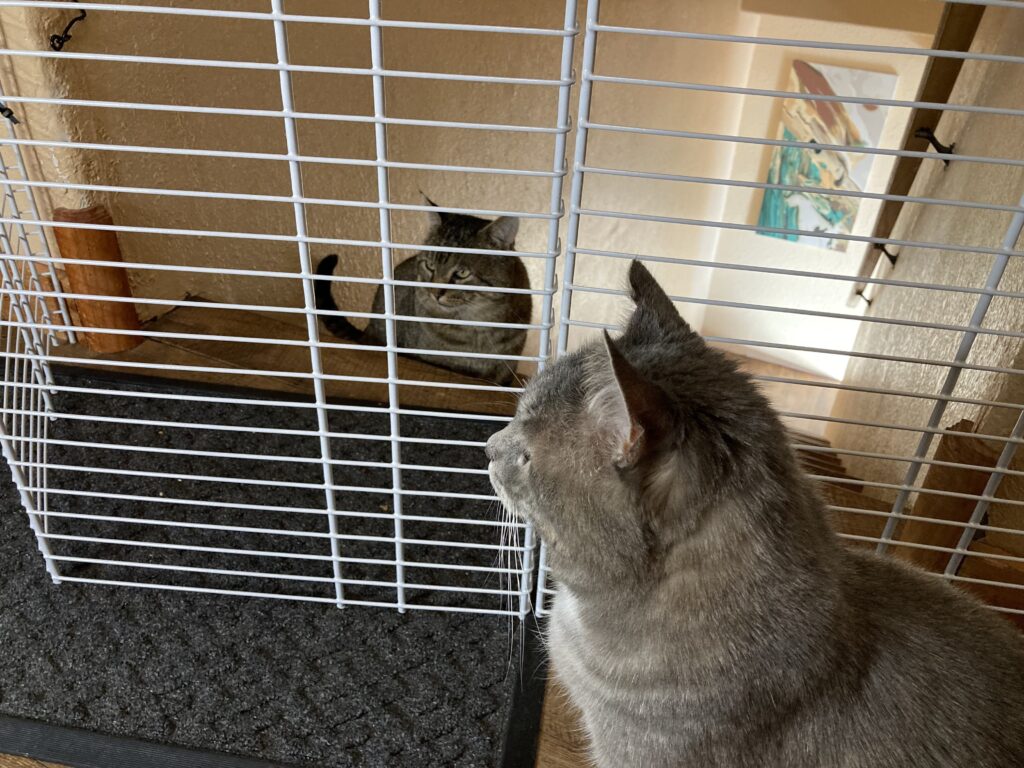 Introducing a new cat to an established group of resident cats can be challenging. Most experts recommend a slow, gradual introduction, similar to how wild cat colonies accept new members.
Introducing a new cat to an established group of resident cats can be challenging. Most experts recommend a slow, gradual introduction, similar to how wild cat colonies accept new members.
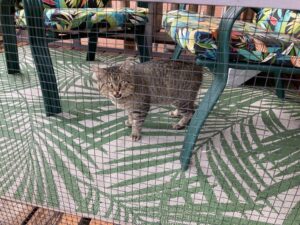
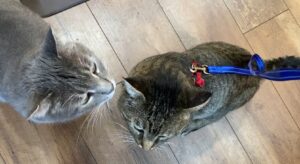

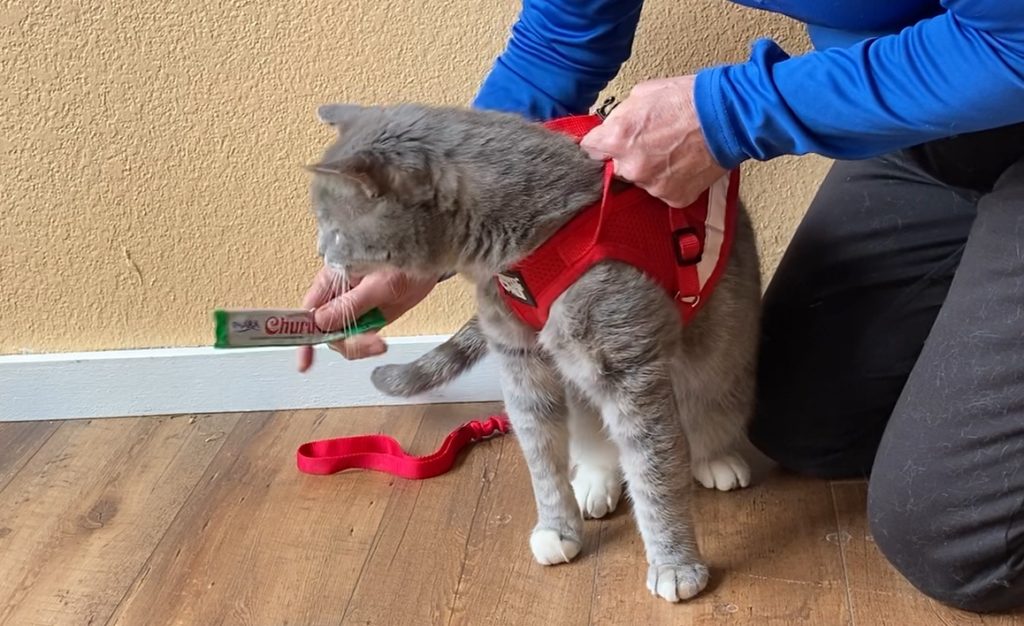


 cat on a morning or afternoon walk in your backyard or neighborhood. After all, getting outdoors is good for us too! It never hurts to have your cat harnessed even in a fenced backyard – this way you can clip the leash on as needed. If you walk your cat in public places, make sure to have kitty in a harness with leash and have a mobile “outdoor safe place” – stroller or backpack – with you.
cat on a morning or afternoon walk in your backyard or neighborhood. After all, getting outdoors is good for us too! It never hurts to have your cat harnessed even in a fenced backyard – this way you can clip the leash on as needed. If you walk your cat in public places, make sure to have kitty in a harness with leash and have a mobile “outdoor safe place” – stroller or backpack – with you.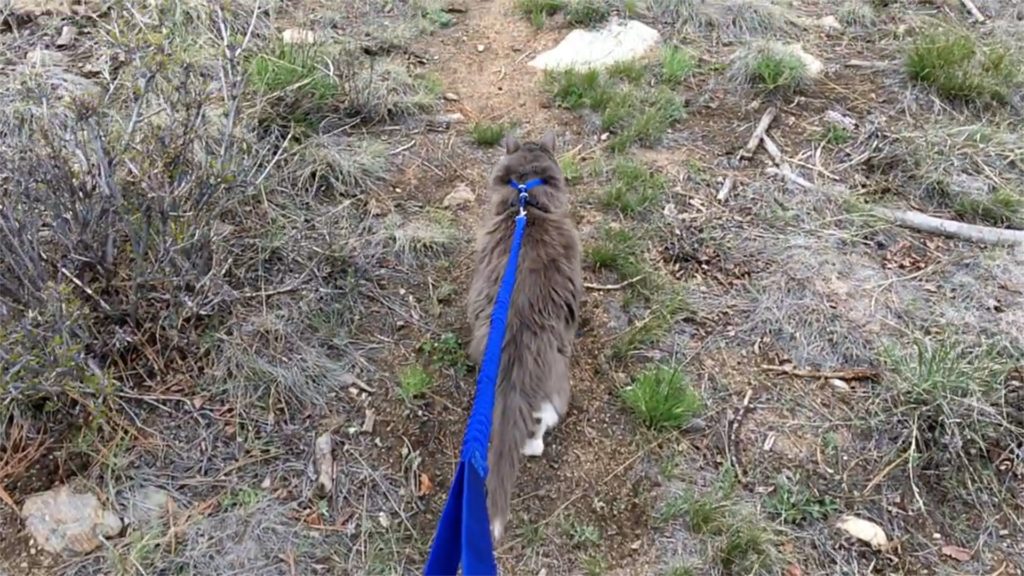 I have seen a lot of advertisements and posts recently on social media about taking your cat for a walk. This can be a source of enrichment for your cat; it is also be a great time to take photos of your friend and bond with her more.
I have seen a lot of advertisements and posts recently on social media about taking your cat for a walk. This can be a source of enrichment for your cat; it is also be a great time to take photos of your friend and bond with her more.
